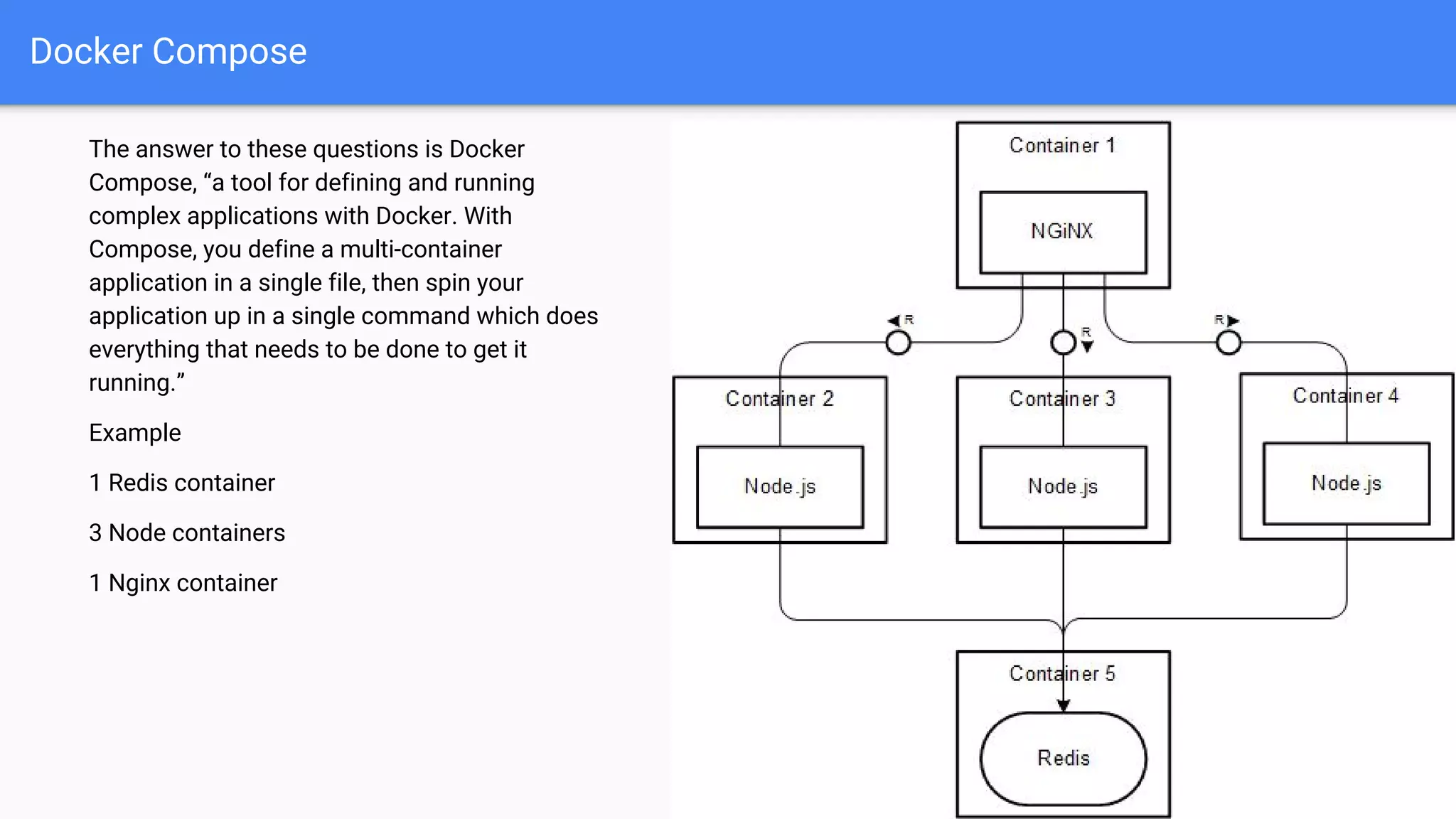This document provides an introduction and overview of Docker and Docker Compose. It begins with background on the speaker and a history of session-based, non-session based, and container-based computing. Key benefits of containers are then outlined. The document explains the terminology used in Docker and provides examples of pulling an image, building an image, and using Docker Compose to define and run a multi-container application with services like Redis, Node, and Nginx. It also lists and briefly explains many common Docker commands.
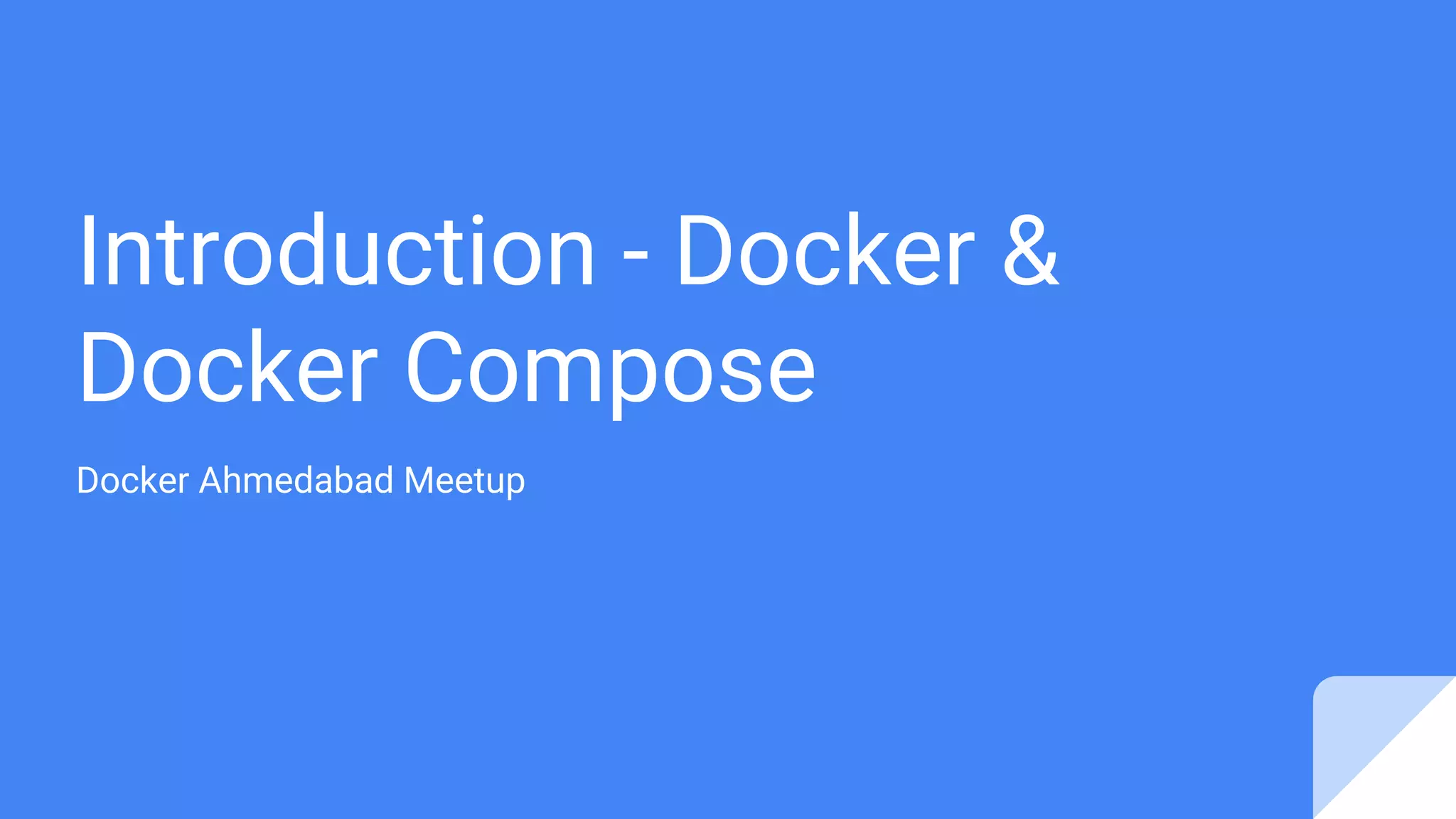
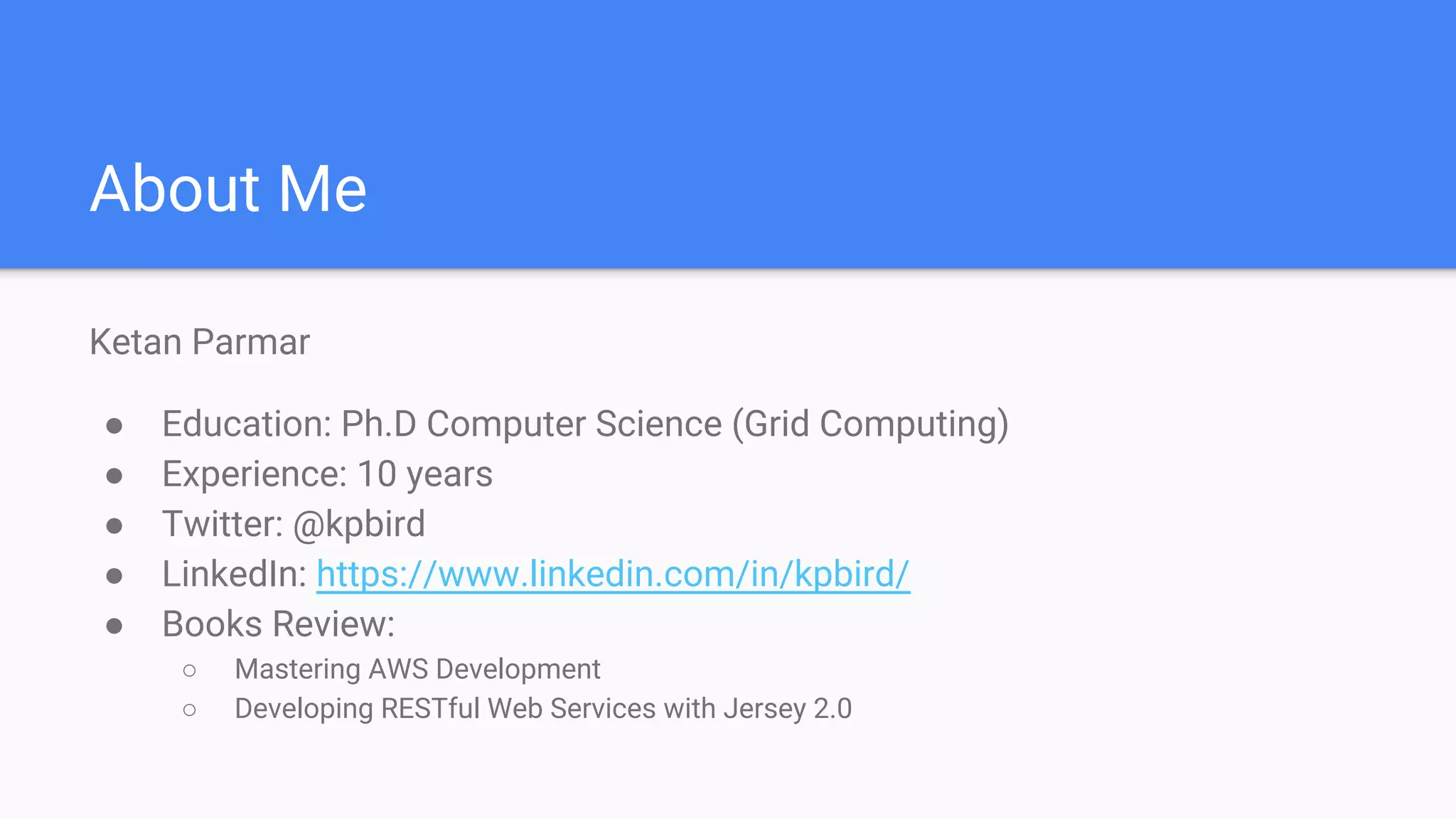
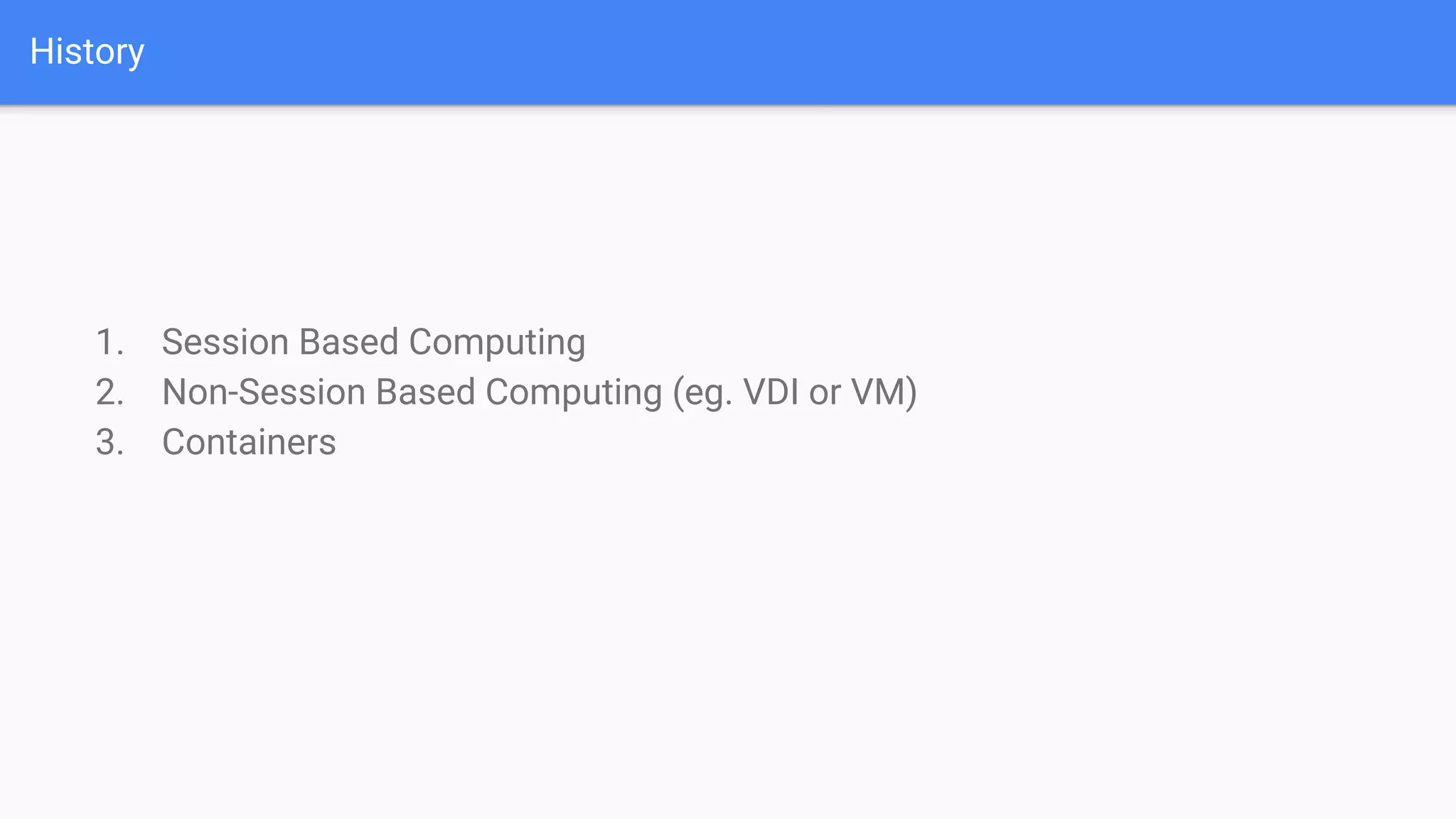
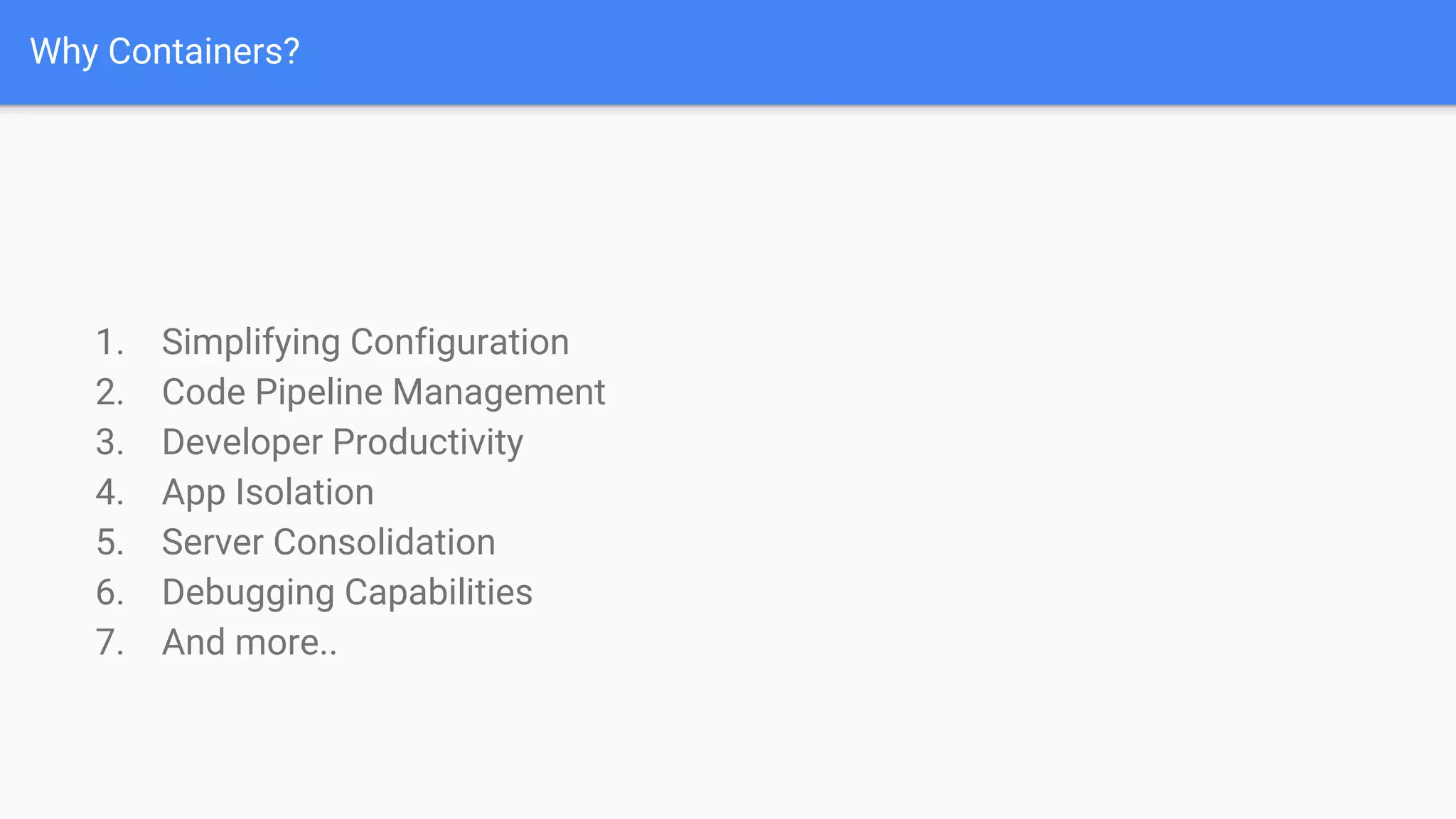
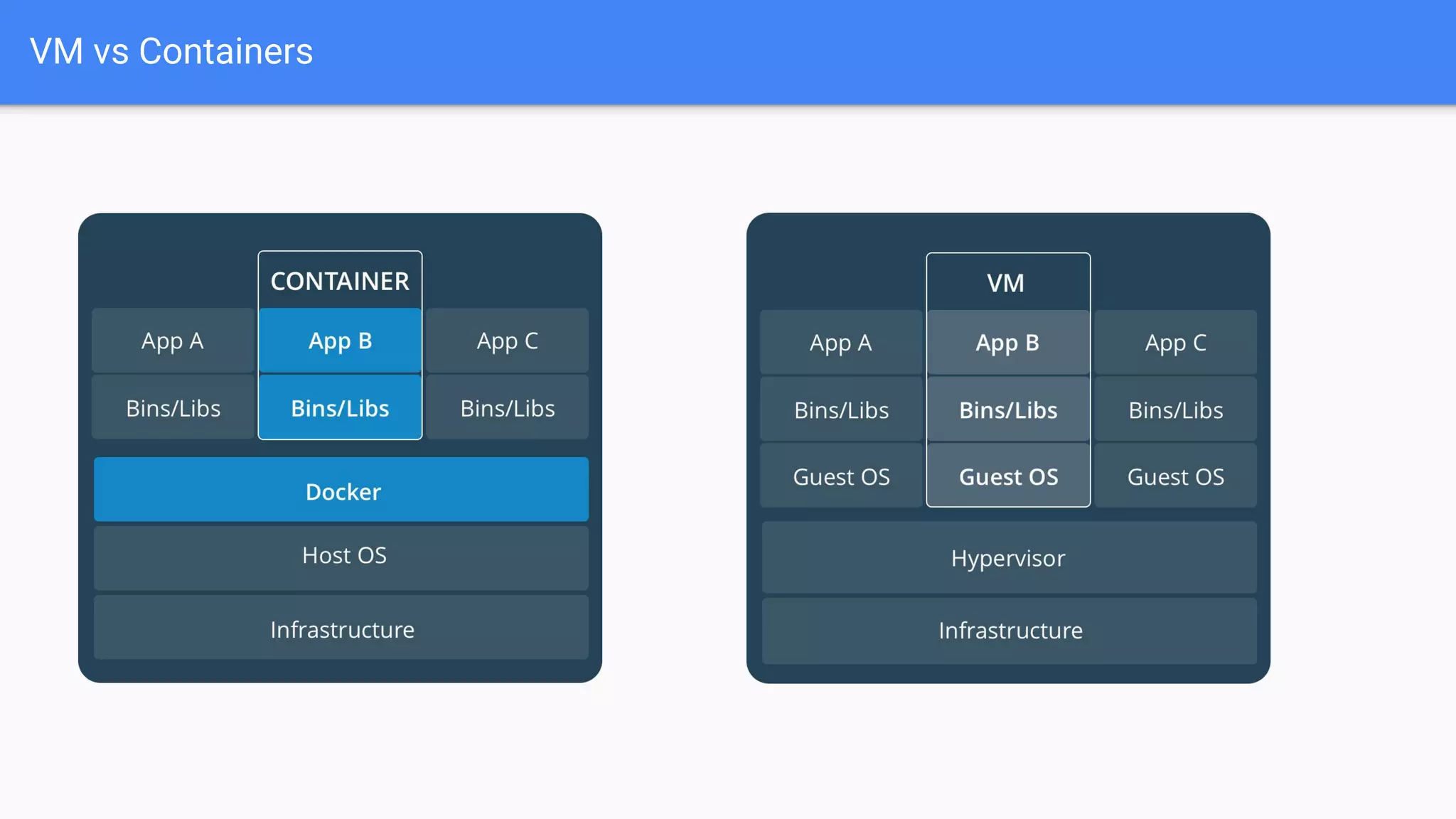

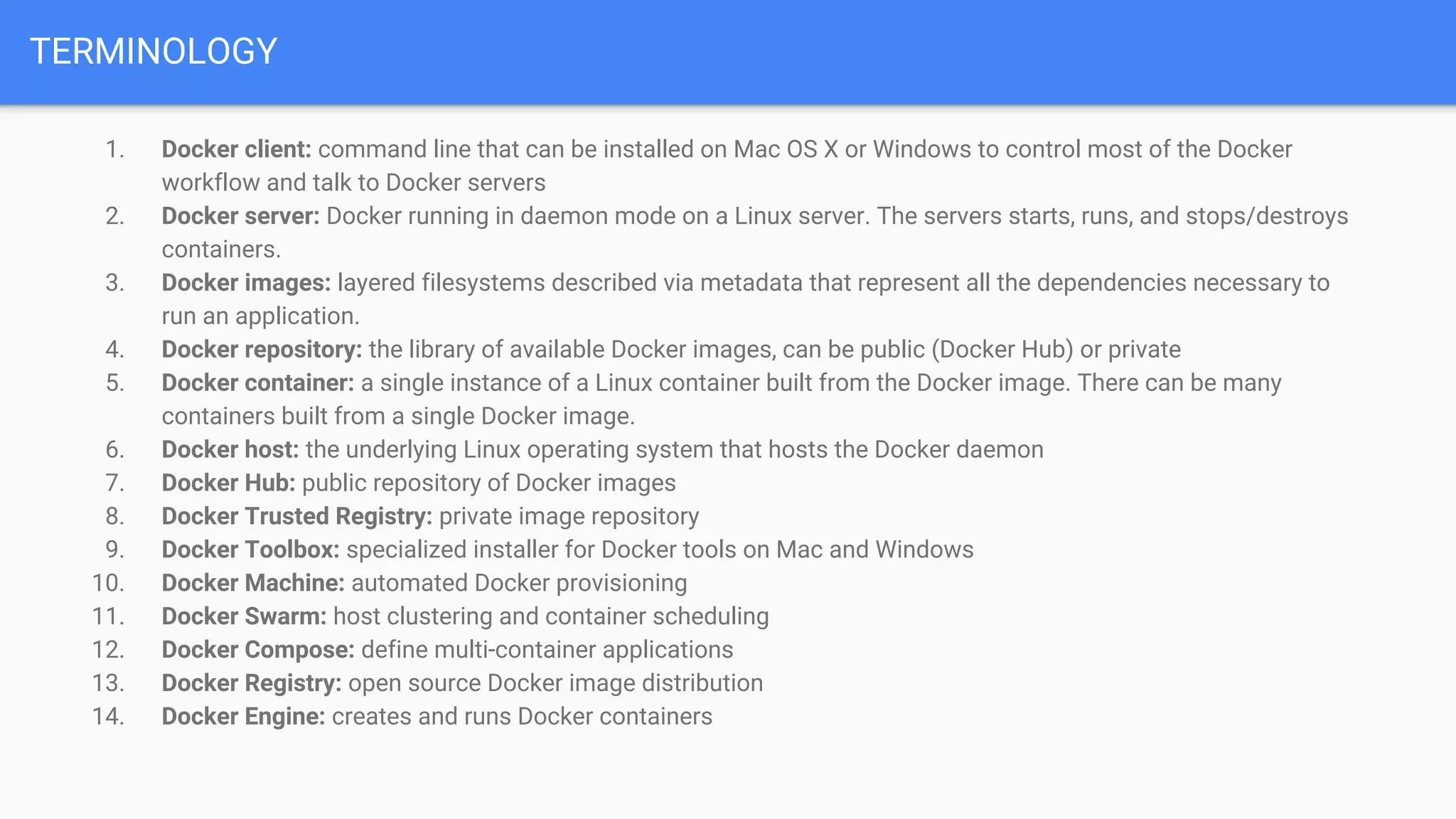
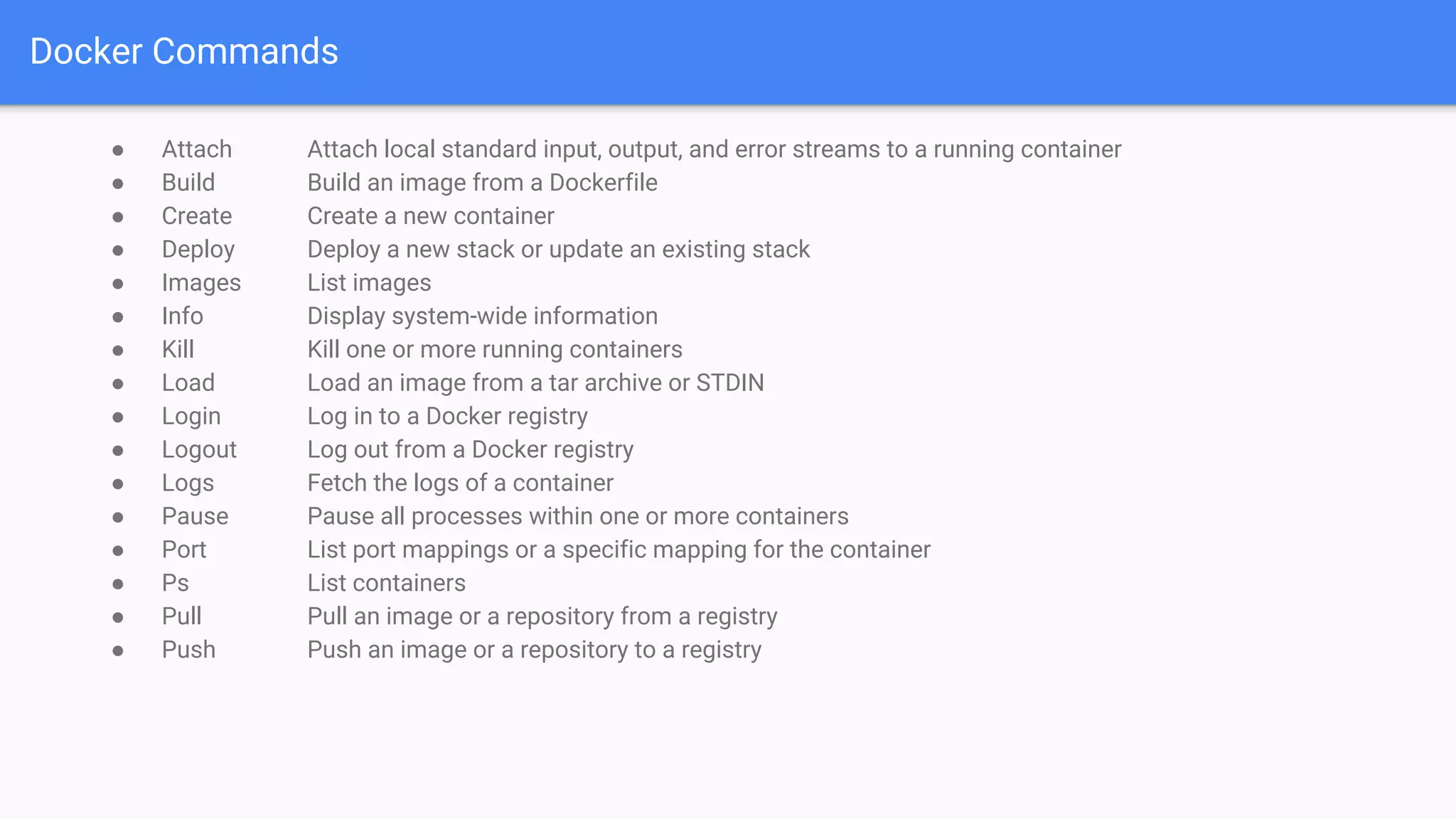
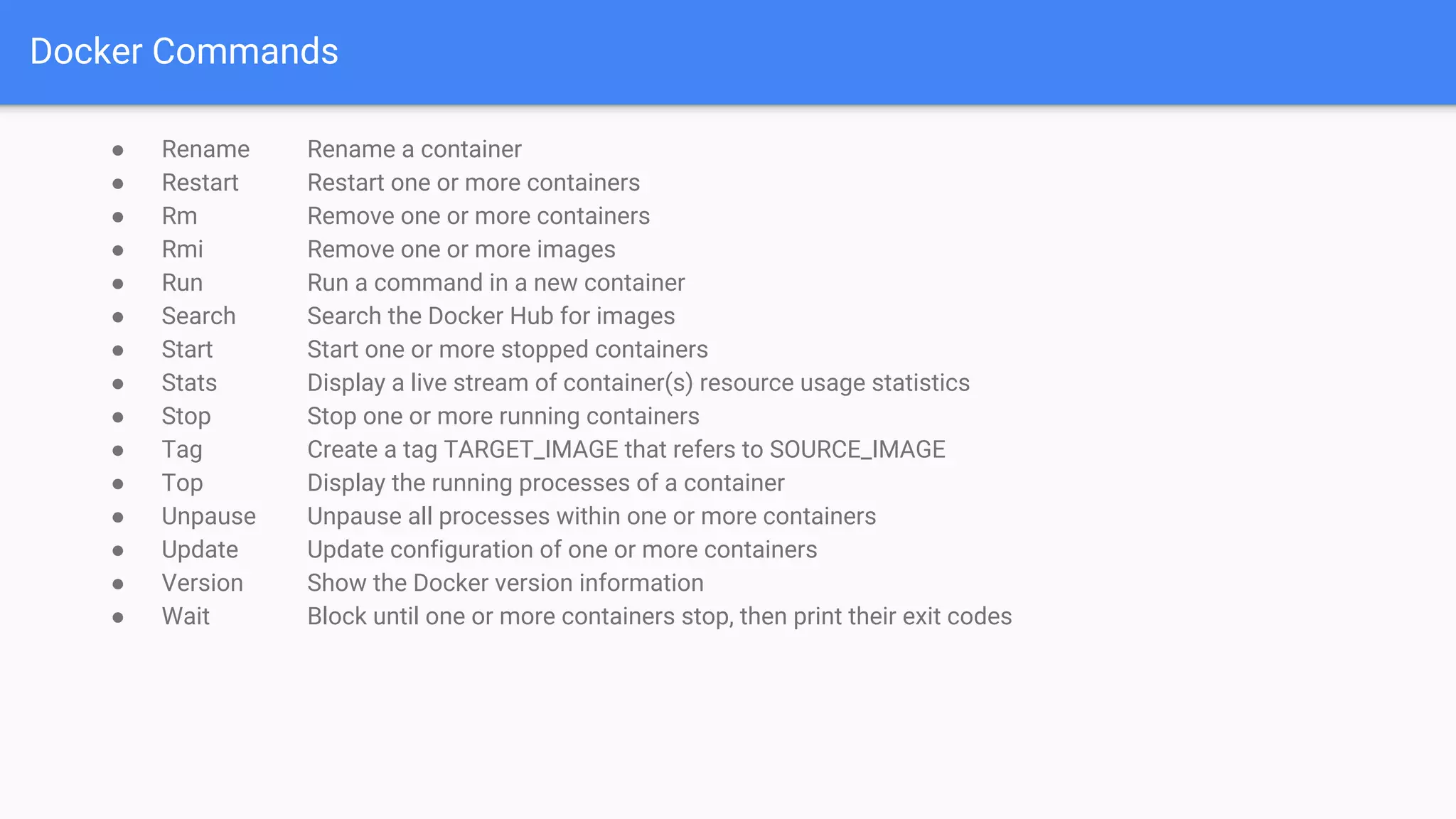
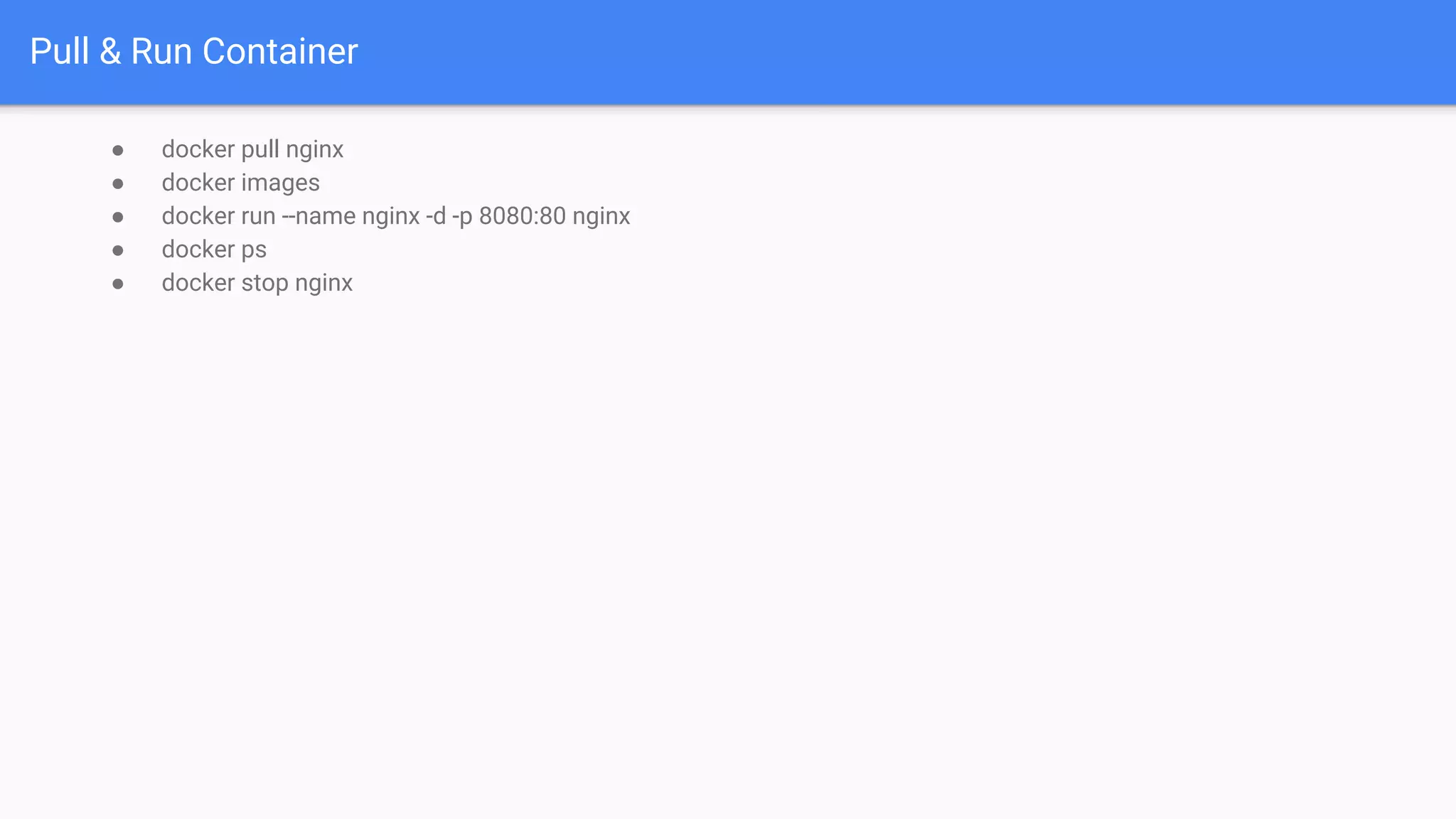
![Build Docker Image FROM ubuntu MAINTAINER Ketan Parmar (ketanbparmar@yahoo.com) RUN apt-get update RUN apt-get install -y nginx ENTRYPOINT [“/usr/sbin/nginx”,”-g”,”daemon off;”] EXPOSE 80 ● docker build -t mynginx:latest . ● docker images ● docker run --name mynginx -d -p 8080:80 nginx](https://image.slidesharecdn.com/dockerintroduction-170708083954/75/Introduction-of-Docker-and-Docker-Compose-11-2048.jpg)

